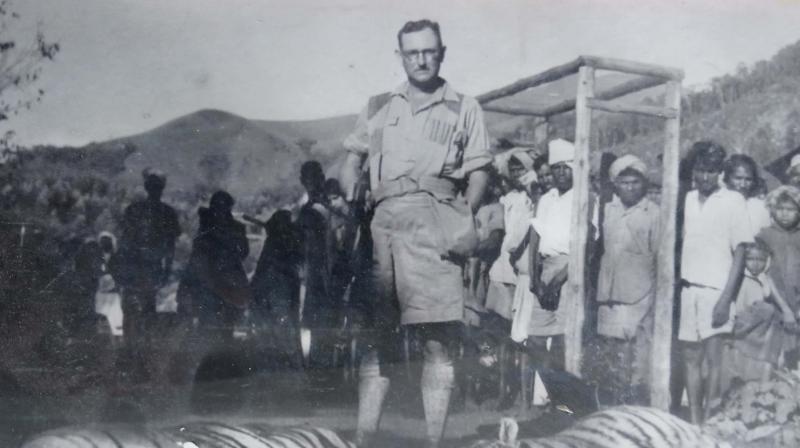Exposing colonial pictures on ‘uncivilised’ natives
By K.P. Jayakumar, Assistant Professor of Malayalam at NSS College, Cherthala.

Thiruvananthapuram: A unique exhibition of photographs reviewing the history of colonial high ranges will be held at the Durbar Hall in Kochi on Sunday, Tuesday and Wednesday.
The exhibition (11 a.m. to 7 p.m.) organised by K.P. Jayakumar, Assistant Professor of Malayalam at NSS College, Cherthala, highlights the strategies adopted by the British for anthropological studies in the late 19th and early 20th century British India to portray native communities as 'uncivilised' to establish the European cultural supremacy.
Jayakumar told Deccan Chronicle that the exhibition shows the lives of local people as depicted by colonial photographers and also displays hunting scenes, various aspects of daily life, habitation and socio-cultural gatherings.
There are also photographs taken by Royal Studio, Munnar, mainly of the floods of 1920 and the now destroyed railway line of Munnar. The studio is not functioning now. Its photographs are now kept by a church in Munnar.
The photographs were collected from public and private archives and museums, churches, private collections, hotels and guest houses.
These photographs were used for taming people by portraying them as crude and inferior by creating the binaries of the ‘civilised’ and ‘uncivilised’ for justifying colonialism. The hunting scenes were framed in specific ways and exhibited in strategic places in bungalows of British to create an ambience of fear and dominance.
Hunting had been one of the prime pastimes of British even in the 1920s.
There was a gaming club in Munnar established in 1920s. Even the idea of forest conservation was mooted by the hunting club. The wild life protection law was introduced in Travancore as per the request of these hunters who wanted the sanctuaries to be divided into game sanctuary and wildlife sanctuary. The Periyar sanctuary then was a gaming sanctuary. As the wild animals did not confine to the boundaries of one sanctuary, they could go beyond the boundaries and hunt. However, they could ensure the banning of primitive hunting by adivasis using crude weapons pointing out that it was a danger to the wildlife even while going ahead with their own hunting activities endangering the wild animals more, said Mr Jayakumar.
Hunting became symbols of power and masculinity. The role of women was restricted to cooking. They introduced fishing as a hobby for women. An angling club was established in Munnar during the period. Though they at first fished the local varieties found in water bodies of the region, they later established hatcheries in places like Kandala to grow European species. This invasion of foreign varieties of fishes had its impact on the local environment of the water bodies. They could also ensure the banning of indigenous fishing practices of adivasis by portraying them as dangerous to the fishes, said Mr Jayakumar.
The ecology and life in the high ranges suffered due to the largescale plantations promoted by the British for staging hunting scenes. Moreover, they could ensure the dominance over adivasi population by restricting their livelihood through hunting and fishing. Adivasis had to depend on the British for their livelihood, he said.
Local communities were depicted as buffoons or clowns to further their colonial agenda. During the gatherings during Sundays, where the meat of hunted animals was served, the adivasis were asked to perform dances after providing them with alcohol and tobacco. These dances were used to depict them as primitive and uncivilised.
Hunting has a major role in the narrative of establishing white masculinity as the universal norm. In the novel Indulekha, Madhavan who runs way from his home used his gun to kill a wayward cheetah in Calcuttta. Madhavan’s cap and his expertise with guns are two elements which established the modernity of Madhavan in the novel even while his kuduma proclaims his tradition.
Pummully Aram Thampuran in the book edited by V.K. Sreeraman is also portrayed as an enthusiast of hunting. The Namboothiri, who is a non-vegetarian by norm, would not have gone for hunting to gather food. He was portrayed so for ensuring his masculine identity, said Mr Jayakumar.

